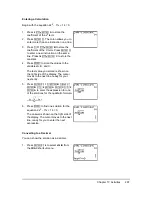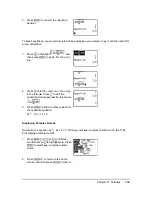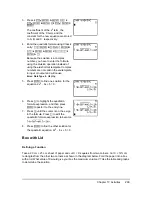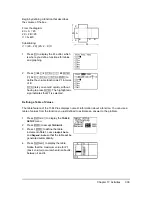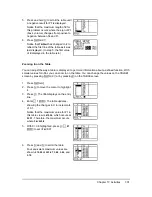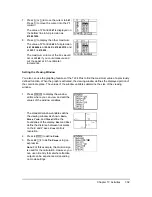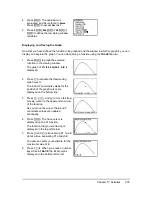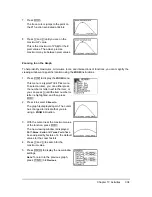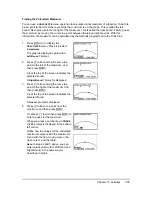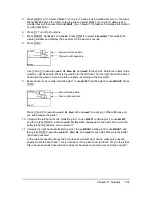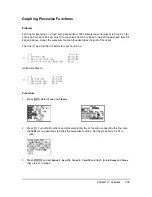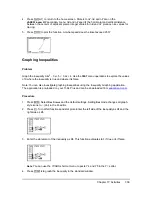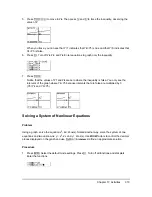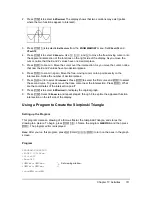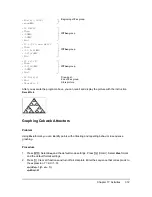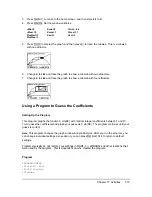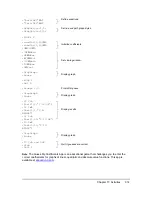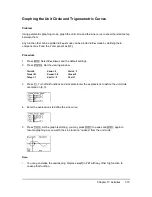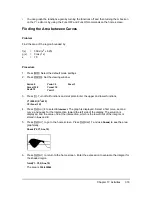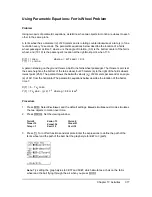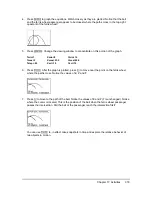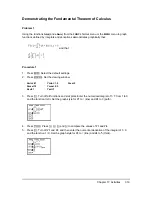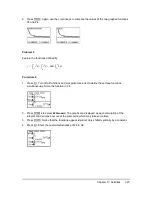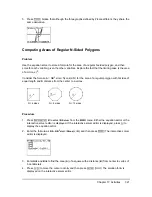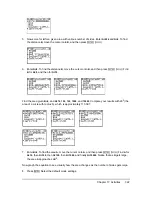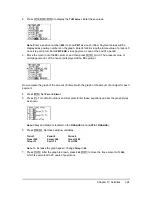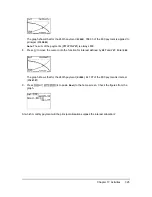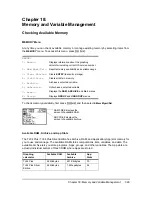
Chapter 17: Activities
311
2. Press
q
4
to select
4:ZDecimal
. The display shows that two solutions may exist (points
where the two functions appear to intersect).
3. Press
q ~
4
to select
4:SetFactors
from the
ZOOM MEMORY
menu. Set
XFact=10
and
YFact=10
.
4. Press
q
2
to select
2:Zoom In
. Use
|
,
~
,
}
, and
†
to move the free-moving cursor onto
the apparent intersection of the functions on the right side of the display. As you move the
cursor, notice that the
X
and
Y
values have one decimal place.
5. Press
Í
to zoom in. Move the cursor over the intersection. As you move the cursor, notice
that now the
X
and
Y
values have two decimal places.
6. Press
Í
to zoom in again. Move the free-moving cursor onto a point exactly on the
intersection. Notice the number of decimal places.
7. Press
y /
5
to select
5:intersect
. Press
Í
to select the first curve and
Í
to select
the second curve. To guess, move the trace cursor near the intersection. Press
Í
. What
are the coordinates of the intersection point?
8. Press
q
4
to select
4:ZDecimal
to redisplay the original graph.
9. Press
q
. Select
2:Zoom In
and repeat steps 4 through 8 to explore the apparent function
intersection on the left side of the display.
Using a Program to Create the Sierpinski Triangle
Setting up the Program
This program creates a drawing of a famous fractal, the Sierpinski Triangle, and stores the
drawing to a picture. To begin, press
~ ~
1
. Name the program
SIERPINS
, and then press
Í
. The program editor is displayed.
Note
: After you run this program, press
y . † † † Í
to turn on the axes in the graph
screen.
Program
PROGRAM:SIERPINS
:FnOff :ClrDraw
:PlotsOff
:AxesOff
:0
!
Xmin:1
!
Xmax
:0
!
Ymin:1
!
Ymax
Set viewing window.
:rand
!
X:rand
!
Y

